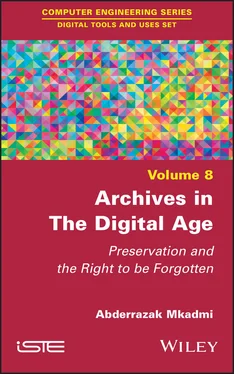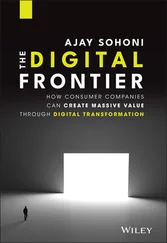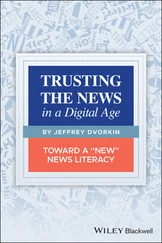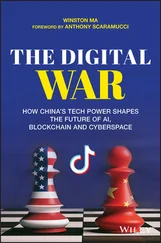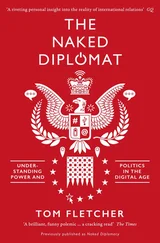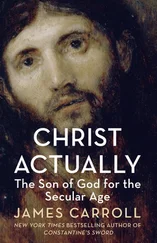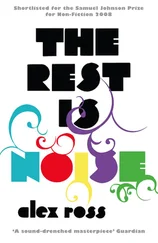
Figure 1.9. MoReq2010 service-based architecture [DLM 10]. For a color version of this figure, see www.iste.co.uk/mkadmi/archives.zip
1.4. EDRMS: merging ERM and RM
EDRMS (Electronic Documents and Records Management System) is a software application that manages a range of digital information, including word processing documents, spreadsheets, emails, images and scanned documents. As a result, an EDRMS can combine the functionalities of electronic document management and records management. Indeed, the main objective of electronic document management is the access and use of digital documents created from short-term office applications. Records management, on the other hand, focuses on the management of information over time for evidentiary purposes, compliance with legislative and governance requirements and ensuring continued authenticity. EDRMS, on the other hand, can combine different functionalities of the first two systems, according to [NAA 11], and is able to:
– create and collaborate on new documents;
– capture records in a central repository for easy search and retrieval;
– integrate common office applications, such as email;
– make links between records;
– describe the records in a controlled way to facilitate searches;
– capture and maintain context-related metadata;
– assign unique identifiers to records during capture;
– protect the integrity of information and ensure its security;
– retrieve information using keywords, creators’ names and registration numbers;
– prevent recovery of “read-only” copies and limit deletion permissions;
– share documents and information to enable collaborative work;
– manage documents in a workflow process;
– control document versions and access authorizations;
– apply records retention rules and capture destruction metadata.
1.5. ECM: the overall data management strategy
ECM (Enterprise Content Management) is a term that has often been confused and used in the same way as ERM, IDMS (Integrated Document Management Systems), RM or even EDRMS. We have previously presented the main characteristics of each of these terms and we have shown that EDRMS has merged the two ERM and RM technologies. Since then, several important evolutions and additions have been made, both to the content to be managed by the latter technology, consisting, in particular, of integrating emails and different workflows, and also, and above all, to the management environment that has become the Web (see Figure 1.10).
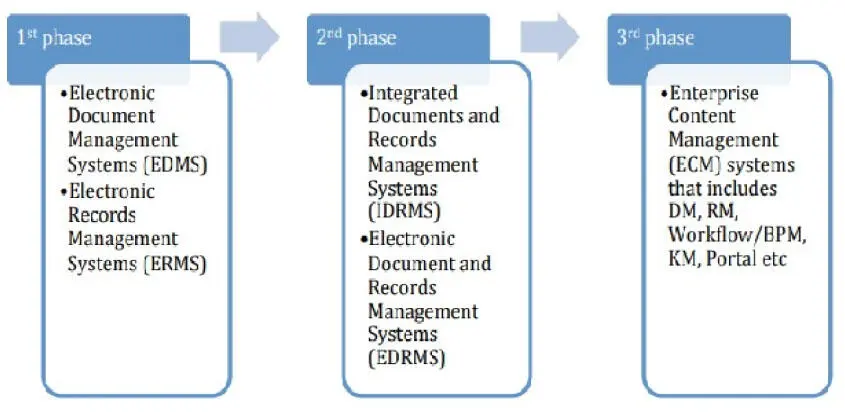
Figure 1.10. Evolution of different concepts leading to ECM [KAT 12], For a color version of this figure, see www.iste.co.uk/mkadmi/archives.zip
We can therefore summarize, according to [KAT 12], the process of the evolution of concepts in three phases:
– the first phase is represented by the ERM and RM concepts;
– the second phase is marked by the IDRMS and EDRMS concepts;
– the third phase is marked by the term ECM, which represents a type of system that includes ERM, RM, workflow, BPM (Business Process Management), portals, KM (Knowledge Management) systems and so on.
In this sense, ECM includes all the tools, methods and strategies for managing content regardless of its nature, whether structured or unstructured, and its type [AII 10]. It provides collaborative tools to facilitate teamwork and to improve and refine work processes. By targeting organizational processes, these methods and strategies are illustrated in several modules (see Figure 1.11).
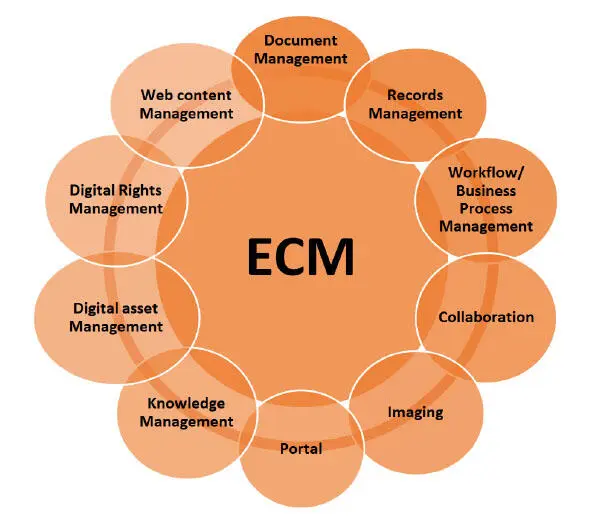
Figure 1.11. The modules of a typical ECM application [KAT 12]. For a color version of this figure, see www.iste.co.uk/mkadmi/archives.zip
Enterprise content management is therefore a working platform that includes a number of modules that can be expanded according to the needs, size and objectives of the company and that are defined in the document management policy. It can include, among others, several fundamental modules, which are records management, workflow, business process management, collaboration, knowledge management, digital asset management, digital rights management and web content management [KAT 12].
The advantages of this technology are that, compared to the other technologies mentioned above, it provides a complete mastery of the different business lines and functions of the company, and consequently a control over the different documents and incoming and outgoing flows. With collaborative tools, ECM ensures more collective intelligence. Nevertheless, to manage digital archives, it must be accompanied by a policy of awareness of different users in order to develop a culture of sharing and openness on new methods of processing, management, access and dissemination of archives, as well as new practices and the roles of archivists 12.
We have tried, in this introductory chapter, to give an idea of the terminology related to the field of archiving, while presenting some elements of definitions of archives, the challenges and objectives of their management, and the traditional tools on which any archiving policy is based. We also treated the transition of these archives into digital forms through the technology of electronic document management and records management. We have shown, on the one hand, the difference between these two technologies through the object of their management, namely, all types of documents for electronic document management and documents validated for records management, and, on the other hand, their link through EDRMS technology, as well as the evolution toward content management systems (ECM). We will try in Chapter 2to develop this transition to digital further through the methods and strategies of digital archiving, while presenting the normative landscape governing this area.
1 1 The French Heritage Code (art. L. 211-4); Tunisian Law No. 88-95 of August 2, 1988 on archives (art. 1).
2 2CCITT (Consultative Committee for International Telephony and Telegraphy): this is a standardization body that has developed a series of communication protocols for the facsimile transmission of black and white images over telephone lines and data networks. These protocols are formally referred to as CCITT T.4 and T.6 standards, but are more commonly referred to as CCITT Group 3 and Group 4 compression, respectively.
3 3ITU-T T6 is a recommendation of the International Telecommunication Union that defines the fax coding schemes and fax coding control functions for Group 4 facsimile machines.
4 4JBIG (Joint Bi-level Image Expert Group) is a group of experts that develops standards for bilevel image coding. Officially, JBIG is the ISO/IEC JTC1 SC29 working group, which is also responsible for the JPEG standard for a suite of compression algorithms used to produce image files supported by web browsers and typically used for complex images such as photographs.
5 5JPEG (Joint Photographic Experts Group) is a standard that defines the recording format and decoding algorithm for a compressed digital representation of a still image.
6 6 Metadata are the set of identification and description elements of electronic resources. These elements are increasingly modelled and standardized to unify and generalize their use.
Читать дальше
